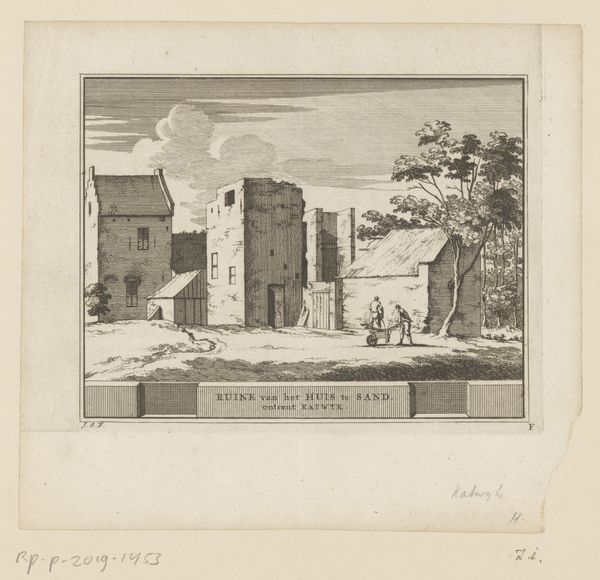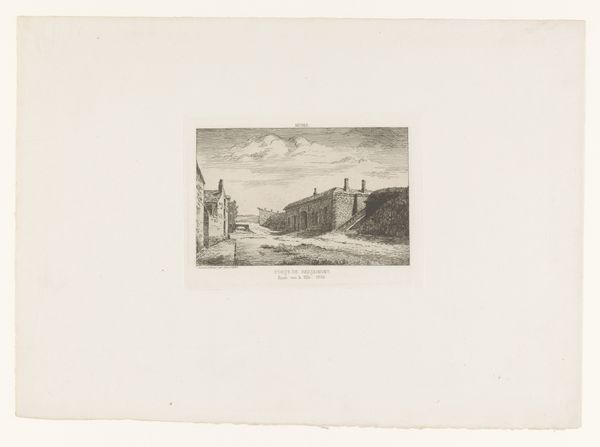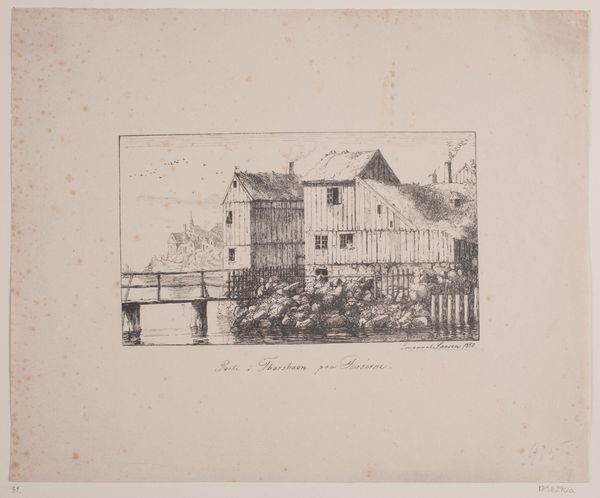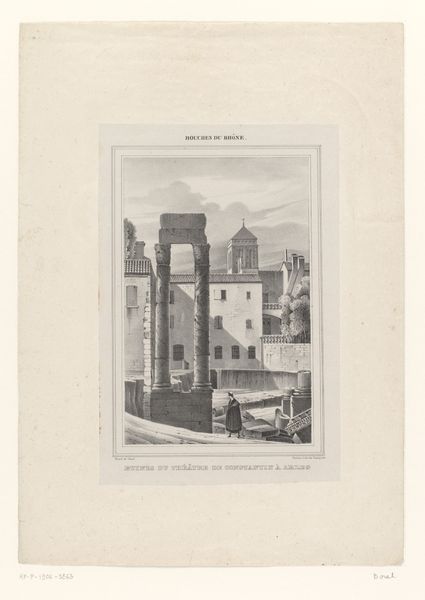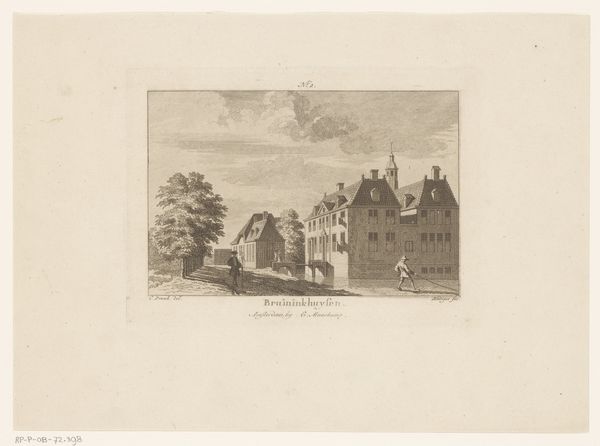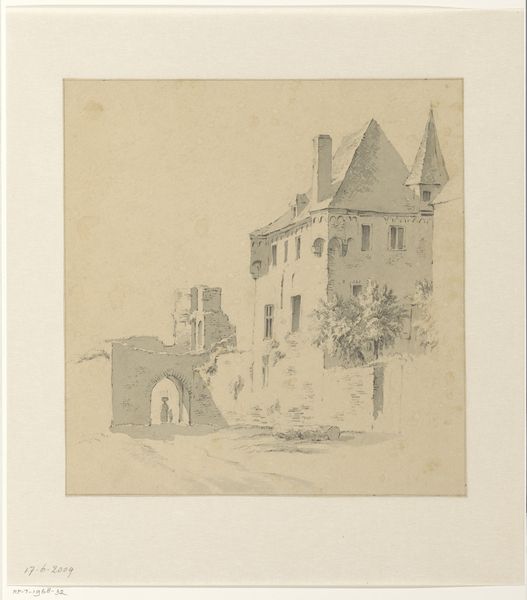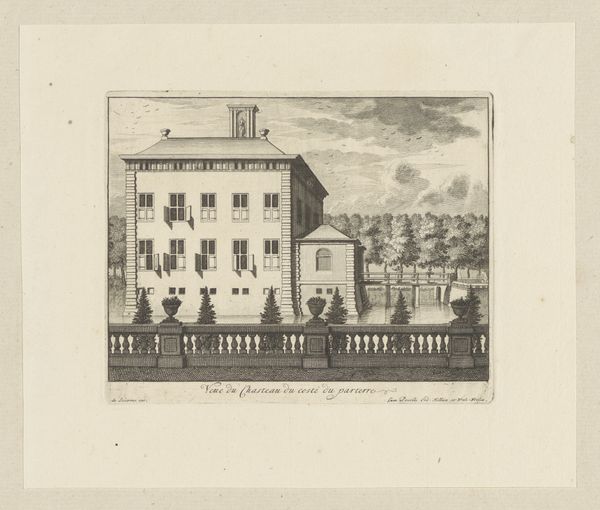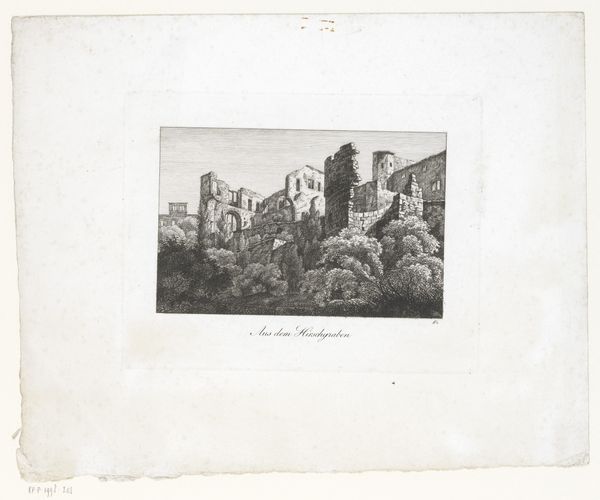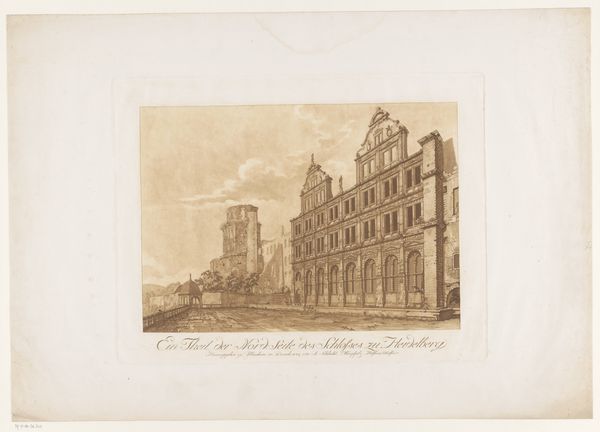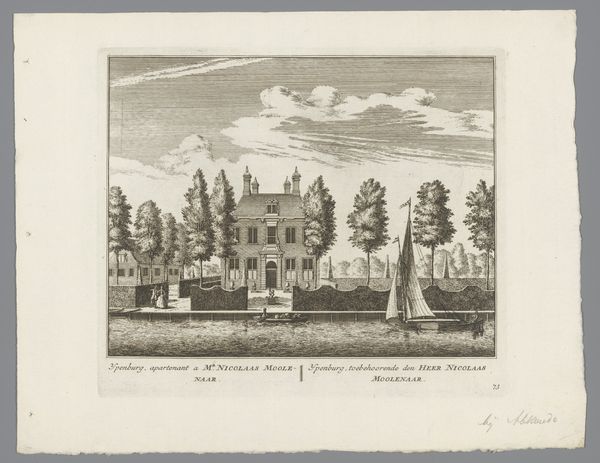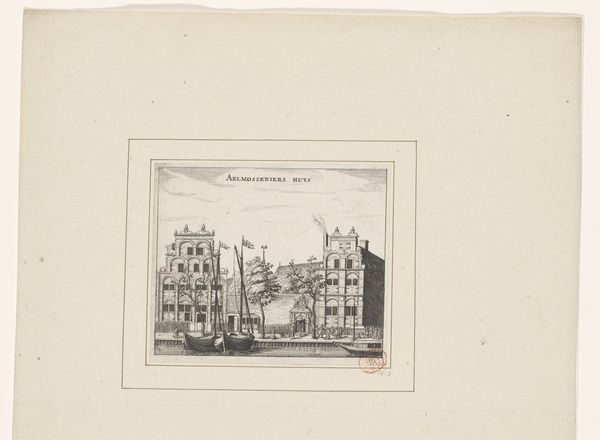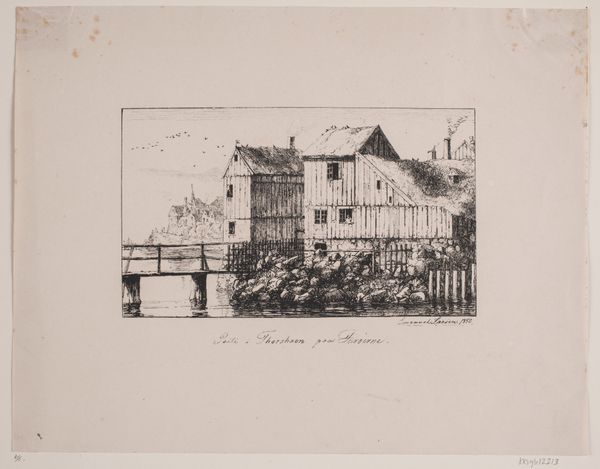
drawing, paper, ink, architecture
#
drawing
#
paper non-digital material
#
pale palette
#
landscape
#
paper
#
ink
#
romanticism
#
architecture
Dimensions: height 150 mm, width 195 mm
Copyright: Rijks Museum: Open Domain
Curator: We're looking at Auguste de Peellaert's "View of the Ruin of the Cistercian Abbey of Villers," made sometime between 1803 and 1876, using ink on paper. Editor: Hauntingly beautiful. The ruins seem to whisper stories of time and loss. There is this melancholy quality. Curator: Indeed. Observe the skillful deployment of ink. The pale palette gives the whole vista an ethereal feeling. The Romantic obsession with ruins comes to mind. There's a definite appreciation for sublime decay. Editor: Absolutely! That strong perspective—drawn perhaps from on site, I wonder?—pulls you into the scene, makes you want to wander those crumbling walls, run your fingers over those stones. You almost feel the presence of ghosts of the monks who dwelled there. I’m always curious to know if those romantic artists felt the same, to them those monks, what they stood for, would also be ruins.. Curator: Precisely, and that sentiment speaks volumes about the era. Think about the play of light and shadow. De Peellaert uses subtle gradations to give the ruin dimension. See how the light hits certain walls, how other portions fade back into the shadows. There’s a very structural understanding on display here. Editor: But there’s freedom too. Look at the trees in the background, they blur the edges of geometric shapes, like life overtaking structures. Like a little rebellion in ink! And that wall in the lower part… It gives a strange balance and invites you to imagine a story, you know… two lovers parting forever. What do you see? Curator: It serves as a visual anchor in this composition, I would say. But stories are born for paintings like this. It gives stability while all else erodes around it. In the history of landscape drawing this composition has its solid space to claim. Editor: Well, from personal, intimate art piece, this drawing transforms to claim historical and cultural space; from sublime personal ruin to monumental timeless. Interesting perspective. Thanks for pointing it out! Curator: It's been a pleasure. A great piece that demonstrates form and sentiment so effectively intertwined!
Comments
No comments
Be the first to comment and join the conversation on the ultimate creative platform.
